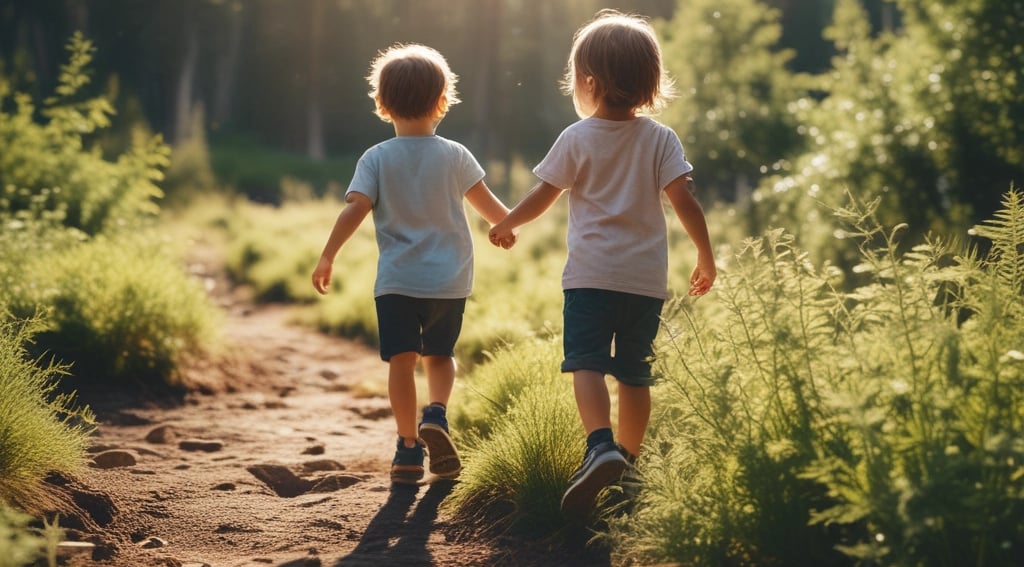10 Effective Strategies to Engage Students in Outdoor Learning
In our society today, kids spend on average 4-7 minutes of unstructured outdoor play every day. How can we get students to engage in outdoor learning? Read on to check out these 10 tips!
5/14/20232 min read


Understanding the Value of Outdoor Learning
Engaging students in outdoor and real-world scenarios is crucial in fostering a deeper understanding of educational concepts. In an age where technology dominates, stepping outside the classroom can offer vital learning experiences that traditional teaching methods often overlook. Outdoor learning not only enhances student participation but also promotes collaboration, creativity, and critical thinking skills. Here are ten effective strategies to engage students in these enriching experiences.
1. Incorporate Nature Walks into the Curriculum
Nature walks allow students to observe their environment firsthand. Encourage them to take notes, sketch, or collect samples during these walks. Teachers can integrate lessons on local flora and fauna, tie concepts from biology and ecology, and even discuss broader themes such as conservation and sustainability.
2. Organize Hands-On Science Experiments
Outdoor settings provide an ideal platform for conducting scientific experiments. Whether it’s testing soil pH, studying plants, or observing weather patterns, hands-on experiments allow students to witness scientific principles in action. The outdoors can turn abstract concepts into tangible realities.
3. Leverage Community Resources
Community gardens, local parks, and nature centers can serve as excellent resources for field trips. Collaboration with these local organizations can enrich students' learning experiences while promoting community involvement. Students can engage in various activities like planting, harvesting, or even assisting with educational programs.
4. Encourage Outdoor Team-building Activities
Arranging team-building exercises in an outdoor environment can enhance interpersonal skills among students. Activities like obstacle courses or scavenger hunts promote teamwork and communication, vital skills in any collaborative setting. These experiences can also serve as a break from the rigors of classroom learning.
5. Integrate Creative Arts in Nature
Art and nature beautifully intertwine. Encourage students to create art based on their outdoor experiences. This can involve painting landscapes, writing poetry inspired by their surroundings, or making crafts from natural materials. Such activities stimulate creativity while also encouraging mindfulness and appreciation for nature.
6. Organize Field Studies
Field studies provide students with real-life contexts to apply their knowledge. Significantly, they allow students to engage with professionals in various fields relevant to their studies, including environmental science, geography, or social studies. These experiences captivate students, making learning relevant to their future roles in society.
7. Implement Outdoor Classrooms
Establishing outdoor classrooms can transform the traditional classroom environment. Whether it’s a dedicated space in a garden or an arrangement of benches in a park, holding classes outdoors stimulates engagement and creativity. Students often feel more comfortable and open in these informal settings.
8. Create Engaging Challenges and Competitions
Outdoor learning can be particularly engaging when it includes challenges or competitions. Organizing events such as nature photography contests or ecology-themed trivia games can stimulate interest and enthusiasm. These activities help develop problem-solving skills while promoting friendly competition.
9. Encourage Environmental Stewardship
Involve students in activities that promote environmental stewardship, such as clean-up drives or tree-planting campaigns. Such initiatives instill a sense of responsibility and awareness about sustainability among students. It connects them with their environment, emphasizing the importance of taking care of the planet.
10. Reflect and Share Learning Experiences
After engaging in outdoor activities, allow students to reflect on their experiences. This can be through discussions, journals, or presentations. Sharing these reflections promotes critical thinking and helps reinforce the lessons learned in a practical context.
In conclusion, engaging students in outdoor and real-world scenarios can lead to more dynamic, memorable educational experiences. By implementing these strategies, educators can develop curious, responsible, and passionate learners who appreciate the environment and the world around them.
